Palaeontology student and specialist of Fossil and Extinct birds. Massive bird nut through and through. Traditonal Paleoartist, Wildlife artist, and occasional cartoonist. Open for commissions! You can also find me on Tweeter:https://twitter.com/IlariPatila
Don't wanna be here? Send us removal request.
Text
I have come into possession of an ornithology book from the 1930's and they had such a way of describing birds back then, modern publishers of birding booking should take note! Here are some of the bangers.















yes, this book refers to the anhinga as a water-turkey
12K notes
·
View notes
Text
"You think you're informed just because you read a bunch of grainy PDFs?"
Yeah man. Reading scholarly works on a topic informs you on that topic. That's how this works.
58K notes
·
View notes
Text

Did some Shizuka practice doodles while watching Disney films with @killdeercheer, @otussketching, and @shadows-and-science-gone-mad.
18 notes
·
View notes
Text
Please Join us if you can! I'll be there, too! Hopefully with some drawings
KULINDAY APPROACHES

TOMORROW, July 24th, is the tenth anniversary of the description of Kulindadromeus! And we want YOU to be there for the tenth annual Kulinday livestream! As always, the ADAD crew and a bunch of other paleontologists and paleoartists banter about dinosaurs, paleontology, and whatever else comes to mind. We'll be using Henry's Twitch channel this time - fittingly enough, https://www.twitch.tv/kulindadromeus. We start at 4 PM UTC / 10 AM MOUNTAIN TIME and will go forth for as long as we can. It's gonna be fun! Join us!
151 notes
·
View notes
Text

Today is the 200th birthday of Megalosaurus! So to celebrate the occasion, his two old friends; Iguanodon and Hylaeosaurus, decided to throw him a surprise birthday party!
Looks like they're having one heck of a time!
Happy Megalosaurus bicentennial, folks! We've now known of dinosaurs for 200 years. It's something worth celebrating!
#paleoart#stylized paleoart#palaeo cartoon#megalosaurus#iguanodon#hylaeosaurus#megalosaurus bicentennial#Happy Birthday Megalosaurus
54 notes
·
View notes
Text
Today Marks 200 Years of Dinosaurs!!
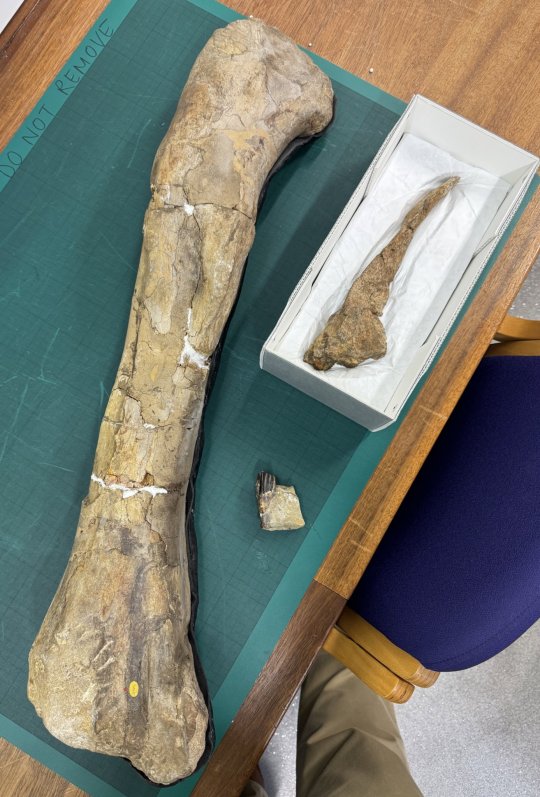
Photo by Paul Barrett (image link here).
On this day, February 20th, 1824, bones from the Stonesfield Slate in Oxfordshire, England were described by William Buckland. Dinosaur fossils have likely been known since time immemorial, but that day was the first time a dinosaur had been described by western science (being the predatory Megalosaurus). Two decades later, Richard Owen would use the three fossils shown above - belonging to three separate animals Megalosaurus (leg), Iguanodon (tooth), and Hylaeosaurus (spine) - to formally recognize Dinosauria as a lineage of animals. Today over a thousand Mesozoic dinosaur genera known, with many being described on a monthly basis, and our understanding of these animals has grown tremendously since the 1820s. We now recognize that dinosaurs were sophisticated, highly active reptiles with diverse behaviors of which one lineage survived the great Cretaceous Mass Extinction Event: the birds. Paleontologist Darren Naish has said that dinosaurs are popular "because they look neat, because they're awesome in every sense of the word, because they ruled a vast, chaotic, complex wilderness, and because they're the source of a myriad of big, really interesting questions". And I'm sure we all couldn't agree more.
So here's to 200 Years of Dinosaurs! How will you celebrate one of the world's most popular and incredible animals?
#reblog#Dinosaurs#paleontology#Paleoblr#200 centuries of dinosaurs lets gooo!!!#It's a surprisingly short time if you think about it#And it all started with Megalosaurus
1K notes
·
View notes
Text
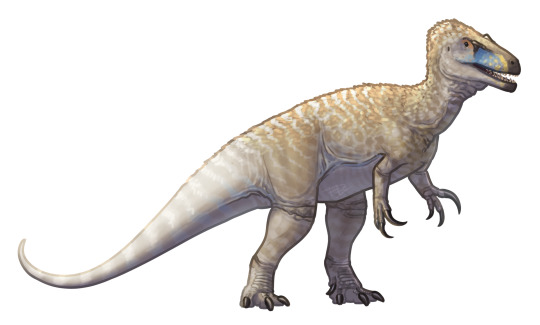
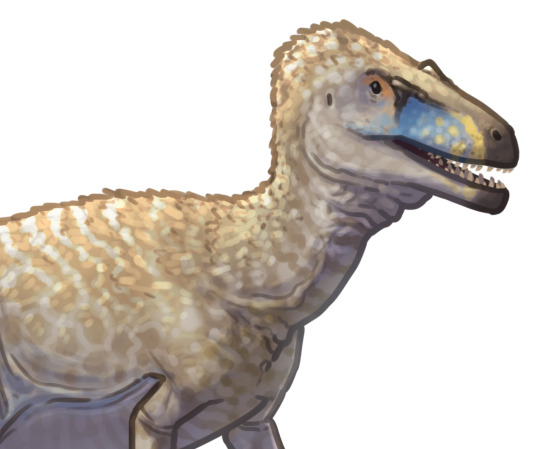

Happy 200th birthday to Megalosaurus bucklandii!!!
On the 20th of February, 1824, English palaeontologist William Buckland announced a discovery at a meeting of the Geological Society of London. The fossil jawbone, several vertebrae, pelvis and limb elements he presented that day belonged to a creature unlike anything seen before: a gigantic, land-living carnivore to which he gave the name Megalosaurus, the "Great Reptile".
This announcement, including an official published description of the fossil remains, was the first of three named species that in 1842 would be collected together by Richard Owen into the group Dinosauria. This makes Megalosaurus, revealed to the world on this day 200 years ago, the first Mesozoic dinosaur to be scientifically named!
Over the years Megalosaurus has been through some ups and downs, from being the most famous dinosaurian predator to being a wastebasket taxon that basically every scrappy theropod fossil was assigned to, to slightly fading into obscurity as more spectacular finds take the spotlight. But through it all the legacy it holds as the dinosaur that kicked off this whole wild 200 year train will always be unique.
So congrats to Megalosaurus on 200 years of being a truly Great Reptile!
#reblog#megalosaurus#paleoart#paleontology#paleoblr#dinosaurs#Happy birthday Megalosaurus!!#Have a Great Bicentennial
669 notes
·
View notes
Text
Fossil Novembirb: Day 16 - Among The Giants

During the Oligocene epoch, 33-23 million years ago, the landscape of Mongolia was as endlessly vast and wild as today. Forests were rare in this part of the world, instead there were shrublands, savannahs and deserts there. This landscape was the realm of giants, like the Paraceratherium of Walking With Beasts fame. Birds were also living in this land of giants, and some were already adapting to it.
Heterostrix: A small early owl, roughly the size of modern pygmy owls. But despite its small size, it was a capable predator of large insects, lizards and mammals, even birds as large as itself.
Agnopterus: One of the earliest known true flamingoes. Little is known of this bird, but it likely fed on tiny crustaceans filtered from the water, as do modern flamingoes.
Sonogrus: One of the flightless paleognath birds that was closely related to ostriches. This fleet footed herbivore belonged to the group known as paragruids.
Ergilornis: Another stem-ostrich in the group known as ergilornithids. The inner toe of these birds was reduced in size to allow for more efficient running.
Caspiodontornis: One of the few pelagornithids known from Asia, this pseudotoothed giant flew above the remnants of the ancient Tethys Sea.
#Fossil Novembirb#Novembirb#Dinovember#birblr#palaeoblr#Birds#Dinosaurs#Cenozoic Birds#Heterostrix#Agnopterus#Sonogrus#Ergilornis#Caspiodontornis
62 notes
·
View notes
Text
Fossil Novembirb: Day 15 - Oasis in the Desert

During the Late Eocene and Early Oligocene, the environment of Jebel Qatrani formation of Faiyum, Egypt was as lush as you could imagine, with tropical forests, and a vast system of wetlands, lakes and rivers connecting to the warm Tethys Sea. As you would expect, such a place was teeming with birds. The birds living here would have no idea that 30 million years later, the Sahara desert would bury all this greenery. But for now, it is an oasis where birds of a feather flock together.
Goliathia: One of the earliest known relatives of the shoebill, arguably one of the most awesome birds alive today.
Nycticorax: An early member of the modern night-heron genus. It is not named, but can be assigned to the genus thanks to the shape of its limb bones.
Xenerodiops: An early member of the stork family with a short, recurved beak. It probably fed like modern wood storks, probing the water with the beak open, snapping it shut on passing fish.
Nuphranassa: A member of the modern jacana group, but much larger than any living species at about the size of a chicken.
Janipes: Another large jacana. Not as large as Nuphranassa, but still larger than any modern jacana. One must wonder what these guys were walking on.
Palaeoephippiorhynchus: An early stork well known from this period. It closely resembles the saddle-billed and black-necked storks, but was markedly smaller in size.
Eremopezus: A very poorly know flightless palaeognath known from a few fragmentary limb bones. Probably related to modern ostriches.
#Fossil Novembirb#Novembirb#Dinovember#birblr#palaeoblr#Birds#Dinosaurs#Cenozoic Birds#Goliathia#Nycticorax#Xenerodiops#Nuphranassa#Janipes#Palaeoephippiorhynchus#Eremopezus
56 notes
·
View notes
Text
Fossil Novembirb: Day 14 - Lost in the Woods

As the global climate was cooling during the Oligocene epoch, tropical rainforests started to shift towards their current distribution in the tropics, and open landscapes such as scrubland was spreading. But that doesn't mean forests were disappearing. In places like Central and Eastern Europe, forests shifted from tropical to temperate. And in these shifting landscapes, birds continued to adapt and diversify.
Turnipax: One of the earliest known members of a relatively obscure bird groups called buttonquails. Despite their quail-like appearance and lifestyle, buttonquails are shorebirds related to gulls and sandpipers.
Palaeotodus: This small insectivore is one of the first known members of the todies, a bird group nowadays restricted to the West Indies.
Primotrogon: An early member of the trogons which had a very different shape compared to its modern relatives, including long wings, a short tail, and relatively small eyes.
Eurotrochilus: The first known true hummingbird, a group now endemic to the Americas, but first appeared in Europe.
Aviraptor: A thrush-sized true hawk with long thin legs and sharp talons, this was a prime predator of small forest birds in the Oligocene.
Wieslochia: One of the earliest known passeriformes, a group that likely evolved in Australia,parts of it's skeleton resemble certain South American passeriforms, like cotingas.
Rupelramphastoides: As the earliest known ramphastid, it was closely related to the barbets as well as toucans, but it bore a closer resemblance to the former.
Oligocolius: A bizarre relative of modern mousebirds that had an appetite for seeds, as the holotype was preserved with seeds in its crop and gullet. It also had a slightly parrot-like beak.
Laurillardia: A distant relative of hoopoes and hornbills, this long winged and long tailed bird used its sharp beak to catch insects.
Rupelornis: A close relative of albatrosses, these seabirds had delicate beaks and long legs. They probably had a similar lifestyle to storm petrels, which carefully pick food from the surface of the water.
#Fossil Novembird#Novembird#Dinovember#birblr#palaeoblr#Birds#Dinosaurs#Cenozoic Birds#Turnipax#Palaeotodus#Primotrogon#Eurotrochilus#Aviraptor#Wieslochia#Rupelramphastoides#Oligocolius#Laurillardia#Rupelornis
47 notes
·
View notes
Text
Fossil Novembirb: Day 13
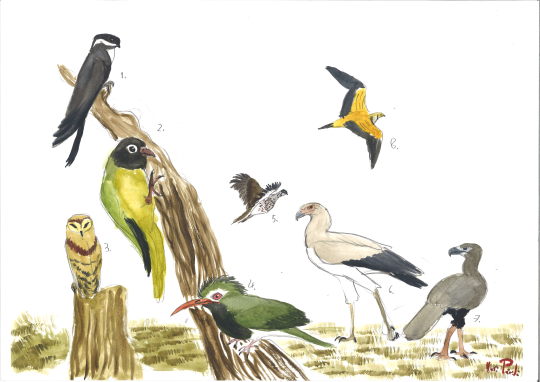
The phosphorate beds of Quercy, France preserve a wealth of fossils from the late Eocene and Oligocene epoch, about 35-25 million years ago. At that time, the early Paleogene jungle hothouse had ended. The climate was drying and cooling, and in parts of the world forests were giving way to savannah and scrubland, as was in Quercy. But that didn't stop birds. They started to take advantage of these new wide open spaces.
Aegialornis: An enigmatic bird that was closely related to swifts. Unlike swifts, it could perch and hold on to branches, but it was also an incredible flyer.
Quercypsitta: A unique group of not well known stem-parrots which likely resembled the earlier Halcyornithids, corvid-like stem-parrots from Europe and North America.
Palaeoglaux: Also known from the Messel Pit, this early relatively small owl may have been a diurnal hunter of small prey and had peculiar body feathers.
Sylphornis: A mysterious member of the piciformes with unique morphology, resembling jacamars and puffbirds.
Paraortyx: One of the earliest true phasianid galliforms, related to partridges, pheasants and chickens. It likely had a similar lifestyle to them, only taking flight when necessary.
Pelargopappus: An early relative of the long-legged secretarybird, this Eocene relative stalked the plains in a similar manner, stomping down on any prey it could catch.
Strigogyps: An omnivorous turkey-sized member of the cariamiform family, it is also known from the middle Eocene of Germany.
Archaeoganga: A relatively large and one of the earliest members of that wonderful desert bird clade, the sandgrouse.
#Fossil Novembirb#Novembirb#Dinovember#birblr#palaeoblr#Birds#Dinosaurs#Cenozoic Birds#Aegialornis#Quercypsitta#Palaeoglaux#Sylphornis#Paraortyx#Pelargopappus#Strigogyps#Archaeoganga
37 notes
·
View notes
Text
The beginning part was a deliberate reference to the opening of Astérix comics.
This is because in the cases of both the gauls and dinosaurs, only one small group survived a major event in their history. All of Gaul was conquered by the Romans except the village of Asterix and friends, and all of the dinosaurs died out at the K/Pg extinction event except for crown group birds, the Neoaves.
The difference being that birds didn't have magic potion.
Fossil Novembirb: Day 1 - The Chosen Ones
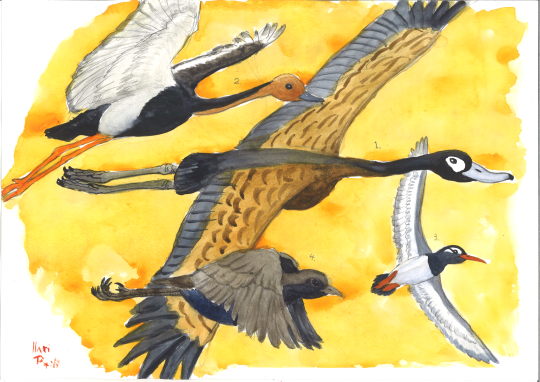
All the dinosaurs died out at the end of the Cretaceous during the K/Pg extinction event 66 million years ago. All of them? No! One group of dinosaurs managed to survive the event and are still around today. Neornithes, or Crown birds. They evolved during the end of the Cretaceous period, and by coincidence, had traits tohelp them survive the cataclysm. Here's a few of these early feathered friends.
Teviornis, a large wading Presbyornithid (flamingo-duck) from Mongolia
"Styginetta", a smaller Presbyornithid (flamingo duck) known from Western North America
Vegavis, a strange, small diving seabird related to ducks and geese, known from Antarctica
Asteriornis, sometimes called the "wonder-chicken", a tiny long legged shorebird related to the common ancestors of ducks and chickens, known from Belgium
207 notes
·
View notes
Text
Fossil Novembirb: Day 12 - Peak Penguin Party
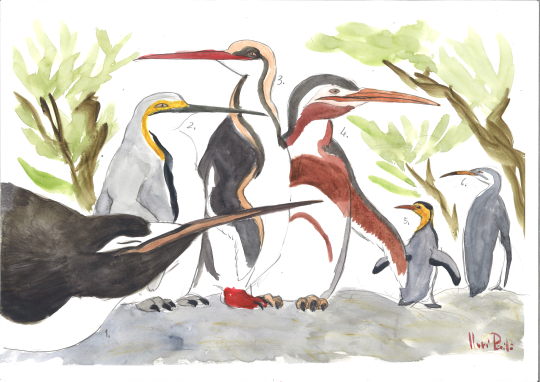
Penguins, as we all know, are the pinnacle of dinosaur evolution. And the latter part of the Paleogene period; the late Eocene and Oligocene epochs, were the pinnacle of penguin evolution. This was when penguins were at their largest, most diverse and most impressive. Does that mean this was the absolute pinnacle of dinosaur evolution? Only time will tell.
Icadyptes: A giant penguin known from the late Eocene of Peru, about 1,5 metres tall. Like many giant penguins, it had a long spear-like beak that was used to harpoon large fish.
Anthropornis: A giant penguin with a peculiar name, this giant was about the size of a human, at 1,6 metres tall and weighing 80 kilograms. it lived in the late Eocene of Antarctica.
Palaeeudyptes: The largest giant penguin and also the largest penguin ever. It could grow up to 1,8 metres tall and weigh 150 kilograms. It lived in the South polar sea during the late Eocene.
Inkayacu: A giant penguin with a difference, the coloration of this animal is known from remarkably preserved fossils from the late Eocene of Peru.
Perudyptes: While this penguin from the middle Eocene of Peru wasn't as big as its giant cousins, it was the size of a king penguin, one of the biggest penguins alive today.
Kairuku: Among of the last truly giant penguins, this 1,3 metre tall penguin lived in the waters surrounding Aotearoa (New Zealand)
#Fossil Novembirb#Novembirb#Dinovember#birblr#palaeoblr#Birds#Dinosaurs#Cenozoic Birds#Icadyptes#Anthropornis#Palaeeudyptes#Inkayacu#Perudyptes#Kairuku
75 notes
·
View notes
Text
Fossil Novembirb: Day 11 - A New Dawn

Messel lake is a legendary fossil site from the middle Eocene of Germany, about 40 million years ago. It preserves incredible fossils and a great diversity of life thanks to the lake's dark, volcanic secrets. This was also famously the setting of the first episode of the paleodocumentary series Walking With Beasts. While the episode isn't particularly accurate and actually takes place at the later part of the Paleogene greenhouse, one thing is certain. There were a lot of birds here.
Hassiavis: An insectivorous bird related to nightjars and owlet-nightjars. The fossil of this bird is so well preserved that even the pattern of the bird's wing feathers is visible.
Paraprefica: An early relative of those peculiar South American birds, the potoos. In all likelyhood, this early potoo was just as weird as modern ones.
Scaniacypselus: One of the first true swifts, and was just as incredibly adapter for a life on the wing as modern swifts and tree-swifts.
Messelirrisor: A tiny insectivorous bird that was related to hoopoes.
Selmes: This small omnivorous bird was related to modern mousebirds. And like them, it could wwist all four of its toes forwards.
Eocoracias: A relative of rollers and the dollarbird that ate insects. The coloration of this bird is fully known thanks to excellent fossil preservation.
Masillastega: The earliest known gannet known from a complete skull. This booby dove under the surface to catch fish, though it likely didn't plunge down like modern boobies.
Rhynchaeites: A widespread wader known from multiple fossil sites in Europe. It closely resembles and may have been related to modern ibises.
Messelornis: A relative of modern rails and the obscure finfoots, this was a very successful bird, with fossils found from Europe and North America.
Juncitarsus: A long legged and spear beaked bird that resembles a crane, but is actually related to grebes and flamingoes. It used it's sharp beak to spear fish.
Paleotis: A relatively large and flightless relative of the modern ostriches, standing around a metre tall.
#Fossil Novembirb#Novembirb#Dinovember#birblr#palaeoblr#Birds#Dinosaurs#Cenozoic Birds#Hassiavis#Paraprefica#Scaniacypselus#Messelirrisor#Selmes#Eocoracias#Masillastega#Rhynchaeites#Messelornis#Juncitarsus#Paleotis
60 notes
·
View notes
Text
Fossil Novembirb: Day 10 - Bayou in the Badlands

The modern landscape of the American west is but a far cry from its past. Early Eocene Green River formation preserves an incredible snapshot of time 50 million years ago. The locality of these fossils was once a huge lake system bordered by forests of sycamore and palmettos, and teeming with animals of all kinds, including birds, which were in the middle of an enormous radiation of forms.
Calciavis: A palaeognath which was a member of the lithornithids. Like them, it fed on insects from the forest floor and was a powerful flier. Some fossils preserve colour pigments of its feathers, suggesting this bird was a glossy black.
Limnofregata: The earliest known frigatebird that flew over the water just as its aeronaut descendants. Like modern frigates, it plucked prey from the water and the shorelines of the lake system.
Plesiocathartes: A bizarre bird that has had a complicated history. Now we know that it was an early relative of the cuckoo-roller from Madagascar and probably lived a similar lifestyle.
Celericolius: An early member of the mousebird family that had long wings and even longer tail. It may have flown at high speed through the forests.
Foro: This american bird is in fact an early member of turacos, birds which are unique to Africa today. Like them, it mostly fed on soft fruit.
Prefica: A strange bird who'se closest living relative is the oilbird of South America, which is a nocturnal frugivore. It could be that this ancient relative lived in a similar way.
Nahmavis: An early member of the shorebird family known from a spectacular fossil that preserves feathers.
Gallinuloides: The earliest known true galliform, this small fowl was among the early ancestors of guans, quails, turkeys and grouse.
Presbyornis: A widespread wading waterfowl related to ducks and geese. Sometimes called the flamingo-duck, it used its flat bill to filter its food, and may have nested in colonies like flamingos.
#Fossil Novembirb#Novembirb#Dinovember#birblr#palaeoblr#Birds#Dinosaurs#Cenozoic Birds#Calciavis#Limnofregata#Plesiocathartes#Celericolius#Foro#Prefica#Nahmavis#Gallinuloides#Presbyornis
48 notes
·
View notes
Text
Fossil Novembirb: Day 9 - Getting a grip
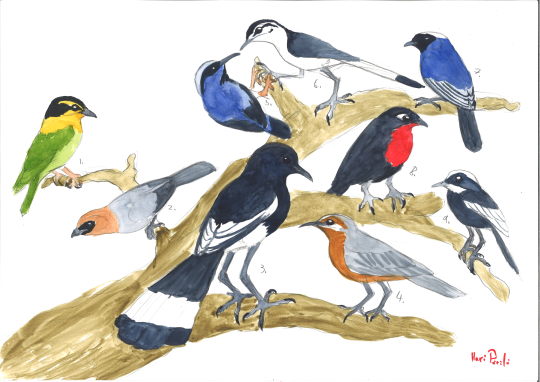
Passeriform birds are by far the most species rich bird group today, representing half of all birds (That's about 6,000 species), which is utterly wild. But before true passerines, birds in the stem-passerine lineage were already diversifying into all sorts of niches. They are equally close relatives to parrots and passeriforms, as can be seen from their passeriform-like bodies and beaks as well as their parrot-like zygodactyl feet. They were likely a big part of the Paleogene morning chorus.
Eofrillingirostrum: This Psittacopedid bird had a strong finch-like beak that was used in eating hard seeds. It lived during the early Eocene of Europe and North America.
Parapsittacopes: Another member of psittacopedes, this bird had a short beak used to eat fruit and berries. It lived 50 million years ago, and its fossils were found in the London Clay formation.
Eozygodactylus: This large member of the Zygodactylid family had long legs with parrot-like feet. These birds lived in North America during the early Eocene, 50 million years ago.
Sororavis: This rather strange member of the stem-passeriforms was found from the Fur Formation of Denmark, around 50 million years ago.
Pumiliornis: A long beaked stem-passeriform from Messel lake, around 40 million years ago. It was the first known bird to have eaten nectar, using its long beak to get it from flowers.
Primozygodactylus: Another member of the Zygodactylid group which lived all over Europe during the Eocene, but is best known from Messel Lake.
Psittacopes: A Psittacopedid bird with short legs and parrot-like feet. This frugivorous bird lived in many parts of Europe during the Eocene.
Psittacomimus: A Psittacopedid bird from the London Clay formation, this bird had zygodactyl feet like parrots as well as a short, rounded beak for eating seeds and fruit.
Zygodactylus: One of the smaller members of the long legged zygodactylids. It was a very successful bird, as its remains have been found from Europe and North America, and it persisted from the early Eocene to the Oligocene.
#Fossil Novembirb#Novembirb#Dinovember#birblr#palaeoblr#Birds#Dinosaurs#Cenozoic Birds#Eofrillingirostrum#Parapsittacopes#Eozygodactylus#Sororavis#Pumiliornis#Primozygodactylus#Psittacopes#Psittacomimus#Zygodactylus
53 notes
·
View notes
Text
Fossil Novembirb: Day 8 - Raptors Are Back

Once the Cenozoic had begun, the only remaining dinosaurs were modern birds. That means raptors (or dromaeosaurs) would never again stalk the Earth, right? Wrong! Raptor dinosaurs get their name from modern raptors: eagles, hawks, owls and the like; and they are in fact some of the closest relatives of birds. So during the Paleogene period when predatory birds started to radiate, they weren't reinventing being a raptor. They continued being raptors.
Palaeoglaux: An early owl from Germany's Messel Lake, about 40 million years ago. Unlike modern owls, it had strange ribbon-like feathers on its body, likely used in display.
Horusornis: A strange relative of hawks and eagles that lived in France 35 million years ago. Like modern harrier-hawks, it had flexible feet to dig out prey from tree cavities.
Antarctoboenus: An early relative of falcons found from Antarctica, about 35 million years ago. It may have prowled near the edges of giant penguin colonies.
Danielsraptor: Another early falcon from the 50 million year old London Clay formation. It had a large jagged beak and long legs, which helped it catch prey on the ground.
Dynamopterus: A relative of Seriemas and terror birds from Messel lake, about 40 million years ago. It likely caught small vertebrates from the forest floor.
Paleopsilopterus: One of the earliest known terror birds, it lived in Brazil about 50 million years ago. It was already flightless and similar to later small terror birds.
Bathornis: A distant relative of terror birds that was remarkably successful. This flightless predator and its relatives lived in North America from the Late Eocene to the Oligocene.
Messelastur: A falcon-like bird of prey that was closely related to parrots and passerines instead of raptors. It lived in Messel Lake about 40 million years ago.
Masillaraptor: A tiny true falcon also known from Messel Lake. It had a relatively long beak from a falcon, and it may have fed mostly on large insects.
Tynskya: Another small raptor related to parrots and passerines, this falcon-like predator lived around 50 million years ago. Its remains have been found in North America and Europe.
#Fossil Novembirb#Novembirb#Dinovember#birblr#palaeoblr#Birds#Dinosaurs#Cenozoic Birds#Palaeoglaux#Horusornis#Antarctoboenus#Danielsraptor#Dynamopterus#Paleopsilopterus#Bathornis#Messelastur#Masillaraptor#Tynskya
79 notes
·
View notes